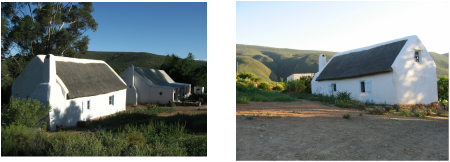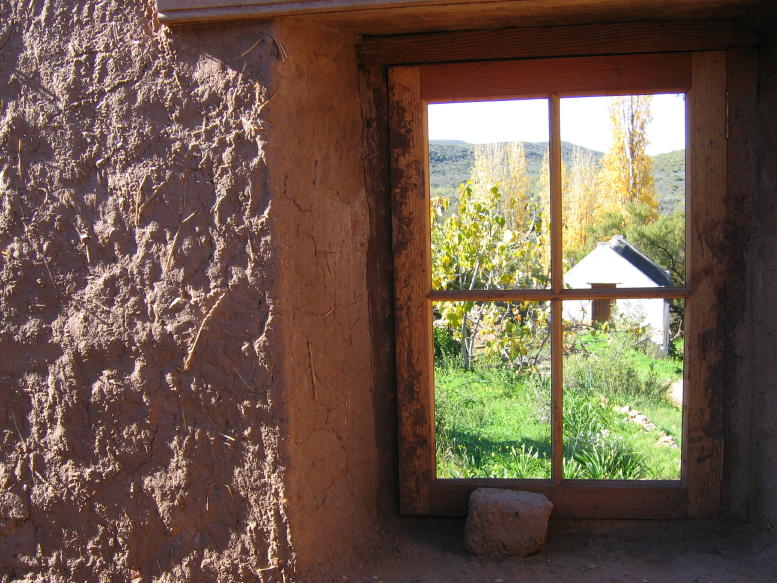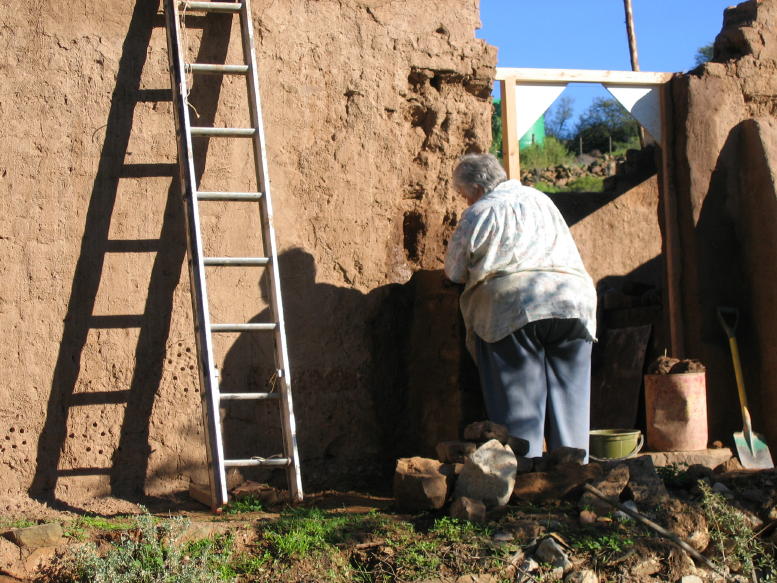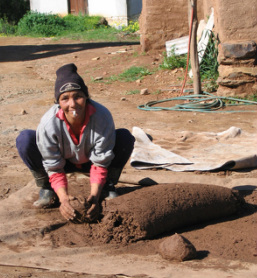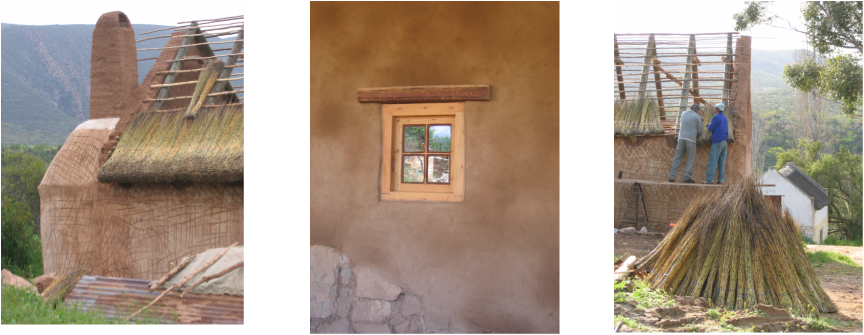Restoration
There is a timeless appeal to the old clay cottages that dot the Karoo landscape. Many artists are drawn to them. The older generations lived in closer harmony with nature, and their buildings functioned as an aspect of their environment, and not as separate entities as they do today. The cottages were built on a human scale, with form following function. They have a wonderful simplicity about them. The windows are small and the walls thick, effectively keeping the internal temperatures more ambient. The doors are low, and are made from simple wooden planks, and the floors are from earth. Building materials were expensive, and had to be carted over long distances and through rough terrain. Most buildings were created from what was to hand in the surrounding landscape, leaving tantalising clues to what had been in days gone by. The rough-hewn yellow wood doors and stinkwood doorframes found on the farm speak of a time when this area was once forested. Often provision was made for future generations by the planting of what would be required for building. So it is that the farm has a grove of poplar trees for planks and roofing, ‘Spaanse Riet’ for the ceilings, and a large stand of traditional bamboo with multiple uses – still present two centuries later.
